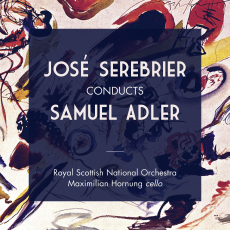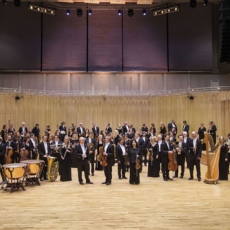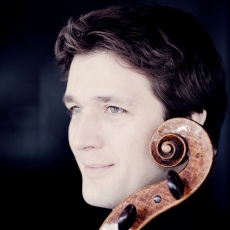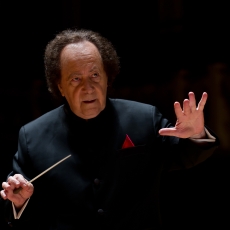RSNO - Serebrier Conducts Adler - Fanfare
Like his elder contemporary Vincent Persichetti, who produced in excess of 150 published works but remains best known for the 14 he wrote for band, Samuel Adler – with over 400 works to his credit – is perhaps most celebrated for some of the finest Jewish liturgical music of moderntimes, including The Vision of Isaiah and the Chanukah classic The Flames of Freedom. Born in Mannheim in 1928, he was forced to flee Hitler's Gennany with his family in 1939 for the safety ofthe United States. Educated at Boston University and Harvard, he studied composition with Walter Piston, Randall Thompson, Paul Hindemith, and Aaron Copland, and conducting with Serge Koussevitzky; a distinguished teacher and the author of three books, he taught at Eastman for nearly 30 years and at Julliard from 1997 until his retirement in 2014.
The most recent of Adler's six symphonies – here receiving both its first performance and premiererecording – has had a curious history, as the composer explains:
"My Sixth Symphony was written in the year 1984-85 under a grant from the Serge Koussevitzky Foundation of the Library of Congress and is dedicated to the memory of Serge and Natalie Koussevitzky. It was composed for the Baltimore Symphony, whose Music Director at the time was David Zinman, a very close friend of mine. After the work was completed, Zinman said that he could not schedule it until several seasons later. Unfortunately, he left his position in Baltimore before it was premiered and the piece unfortunately remained unperformed. It happens quite often today that most orchestras do not want to perform a work by a living composer which was not commissioned by them. This was the case with my Sixth Symphony."
A compact, three-movement work lasting some 27 minutes, the symphony is a powerful, immaculately structured dynamo that defies easy classification. Adler's former Juilliard colleague, the composer Robert Beaser, after noting that the work is "clearly in the path of mainstream American symphonist tradition" correctly points out that it "finds its niche in a synthesis of neoclassicism and free chromaticism, occupying that elusive middle ground." In addition to its propulsive forward momentum, there's an underlying emotional intensity throughout, even in the slow movement, of which the composer says: "The character is reminiscent of the eerie feeling one experiences when leaves unexpectedly rustle." The final movement, marked Fast and rhythmic, is certainly that and then some: a riveting conclusion to a courageously no-nonsense work clearly intended for grownups.
Composed in 1995 for the Cleveland Orchestra's Stephen Geber, Adler's Cello Concerto is cut from approximately the same cloth: another tightly woven construct modeled along Classical lines that nonetheless constantly confounds expectations. Most surprising of all is the lavish, percussionladen orchestration. Conventional wisdom suggests that an orchestra of Classical proportions is amust in a concerto for a solo instrument whose voice is notoriously easy to drown out, but such is Adler's skill in manipulating the assembled forces that it never becomes an issue (one of the composer's books, after all, is The Study of Orchestration). Also perfectly balanced is the concerto's four-movement structure, which contrasts moments of haunting, celesta-driven lyricism with abundant – and often electrifying – virtuoso display.
If the title of the nine-minute Drifting on Winds and Currents would seem to suggest a serene conclusion to the anthology, then Adler surprises us yet again. After a deceptively placid opening, the tone poem explodes with a tremendous brassy energy that continues unabated to the final note.
Serebrier and the orchestra approach all three works like people on a mission, convinced that they're dealing with some tremendously important music. After the second or third hearing, you become convinced how absolutely right they are.



